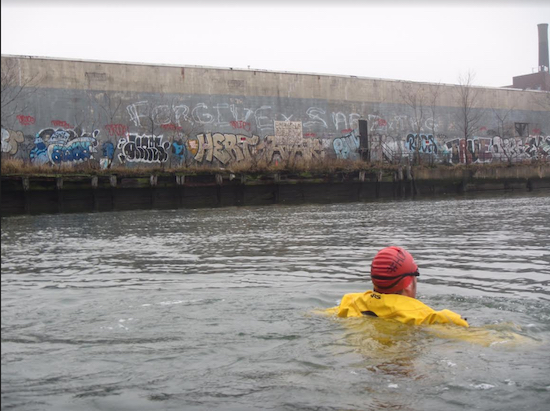Newtown Creek: How to fix the combined sewage overflow problem

Clean water activist Christopher Swain swam the length of Newtown Creek in December 2015 to bring attention to the waterway’s toxic state. Photo courtesy of Christopher Swain
“The wind blew and the sh*t flew,” were the first words the Brooklyn Eagle heard one morning before climbing aboard the Riverkeeper patrol boat to explore Newtown Creek.
While many Brooklynites know of the Gowanus Canal — arguably one of the dirtiest waterways in America — fewer are aware of Brooklyn’s almost equally polluted body of water: Newtown Creek.
The 3.5-mile estuary runs through a part of the border between Brooklyn and Queens and along the edges of Greenpoint and East Williamsburg.
